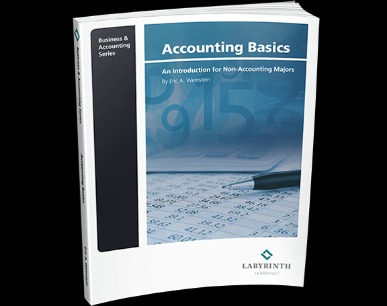Content

The metric can provide useful insights but doesn’t tell the whole story. For example, a young company may have a significantly higher SG&A ratio than a more established one. What can be considered a “good” SG&A ratio for a company depends on a few factors, including industry, age, growth trajectory, and more. Breaking these terms down adds further context to a company’s operations.
No matter the name, it’s a measure of your Definition Of Selling General And Administrative Sg&a Expenses‘s performance. SG&A expense represents a company’s non-production costs in selling goods and running daily operations. Properly managing and understanding SG&A is crucial to control costs and sustain long-term profitability. Other selling expense is indirectly related to the number of units sold. Rather, these are expenses incurred throughout the manufacturing process to earn more sales, such as base salaries of salespeople, marketing, and out-of-pocket travel expense.
Indirect Selling Expenses
This includes the cost to rent equipment or make one-time, non-material costs that do not meet capitalization requirements. Per diem is an allowance received by an employee for each day of business travel, simplifying the management of receipts and expenses. From this amount you subtract your SG&A figure, which might be another $30,000 as well as other costs of maybe $1,000, in other words, a total of $31,000. Your operating income is therefore $70,000 minus $31,000, that is $39,000. While SG&A brings great benefits to a company’s recordkeeping, it also has limitations. Specifically, relying on SG&A figures can cause companies to aggressively cut costs. Some of these costs could be necessary, and cutting them may impact the company negatively.
This indicator shows what percentage of a dollar earned is spent on SG&A expenses. Harold Averkamp has worked as a university accounting instructor, accountant, and consultant for more than 25 years. He is the sole author of all the materials on AccountingCoach.com. Sales CommissionSales commission is a monetary reward awarded by companies to the sales reps who have managed to achieve their sales target. It is an incentive geared towards producing more sales and rewarding the performers while simultaneously recognizing their efforts. A sales commission agreement is signed to agree on the terms and conditions set for eligibility to earn a commission.
Expenses Not Covered Under SG&A
That’s still a high number by small business standards, but it’s not good enough if fixed costs are $900,000. A firm with high fixed costs is said to have high operating leverage. These costs can be fixed, or they can vary in relationship to sales. LegalZoom provides access to independent attorneys and self-service tools.
- After all these expenses are deducted from revenue, profit or loss is what we call net income, quite literally, “the bottom line” on the income statement.
- Since commissions are variable costs it’s particularly important to keep an eye on the maximum amounts that are flowing out of your bank accounts here.
- SG&A expenses are sometimes referred to as period costs since they relate to the time period in which they are incurred, and they do not relate directly to production.
- Operating Expenses SectionOperating expense is the cost incurred in the normal course of business and does not include expenses directly related to product manufacturing or service delivery.
https://personal-accounting.org/ important to keep an eye on this cost month-to-month to assess the profitability and trends. These are the day-to-day costs a company incurs for its operations and functionality, regardless of whether or not it generates a profit. Below is an overview of SG&A, including examples, how it is accounted for, and how it differs from other operating expenses. Sometimes, the terms SG&A and operating expenses are used interchangeably. Understanding SG&A expenses is important for managing overhead costs, knowing where to cut costs if needed, and sustaining profitability. Our in-house bookkeeping team completes your books and generates a monthly income statement and balance sheet for you. Bench’s easy-to-use software let’s you quickly see how your business is doing so you can make smarter decisions with your money and master your spending.
General and Administrative Expenses
You might encounter a problem when you’re analyzing income statements from two firms in the same industry. Some costs can be either the cost of goods sold or the SG&A expenses. This can make the gross profit margin and the operating profit margin appear to differ, even if the firms are financially identical otherwise. Tracking and managing SG&A expenses is an integral part of financial management, as it can provide valuable insight into a company’s operations and help to improve its profitability and efficiency. General expenses are essential for companies and investors, as they can impact a company’s profitability and efficiency. Companies with high available fees may not operate as efficiently as those with low overhead costs, which can negatively impact their bottom line.
SG&A is a blanket label that can be used to lump salaries, marketing costs, insurance, and other items together. SG&A can be broken down into selling expenses and general and administrative expenses. Reported separately from COGS and other operating expenses, companies can evaluate SG&A to assess the break-even or profitability points.
Understanding SG&A: Selling, General, Administrative Expenses – Definition and Explanation – Conclusion
This is the point where revenue generated and expenses incurred are the same. Then, when trying to increase profits, SG&A can be reviewed to identify areas of bloat. One of the first things that a company does to increase profitability is cut operating expenses. Cutting the base salary of non-sales personnel is a quick way to reduce costs without interrupting manufacturing or sales. SG&A expenses are essential for companies and investors, as they can impact a company’s profitability and efficiency.
